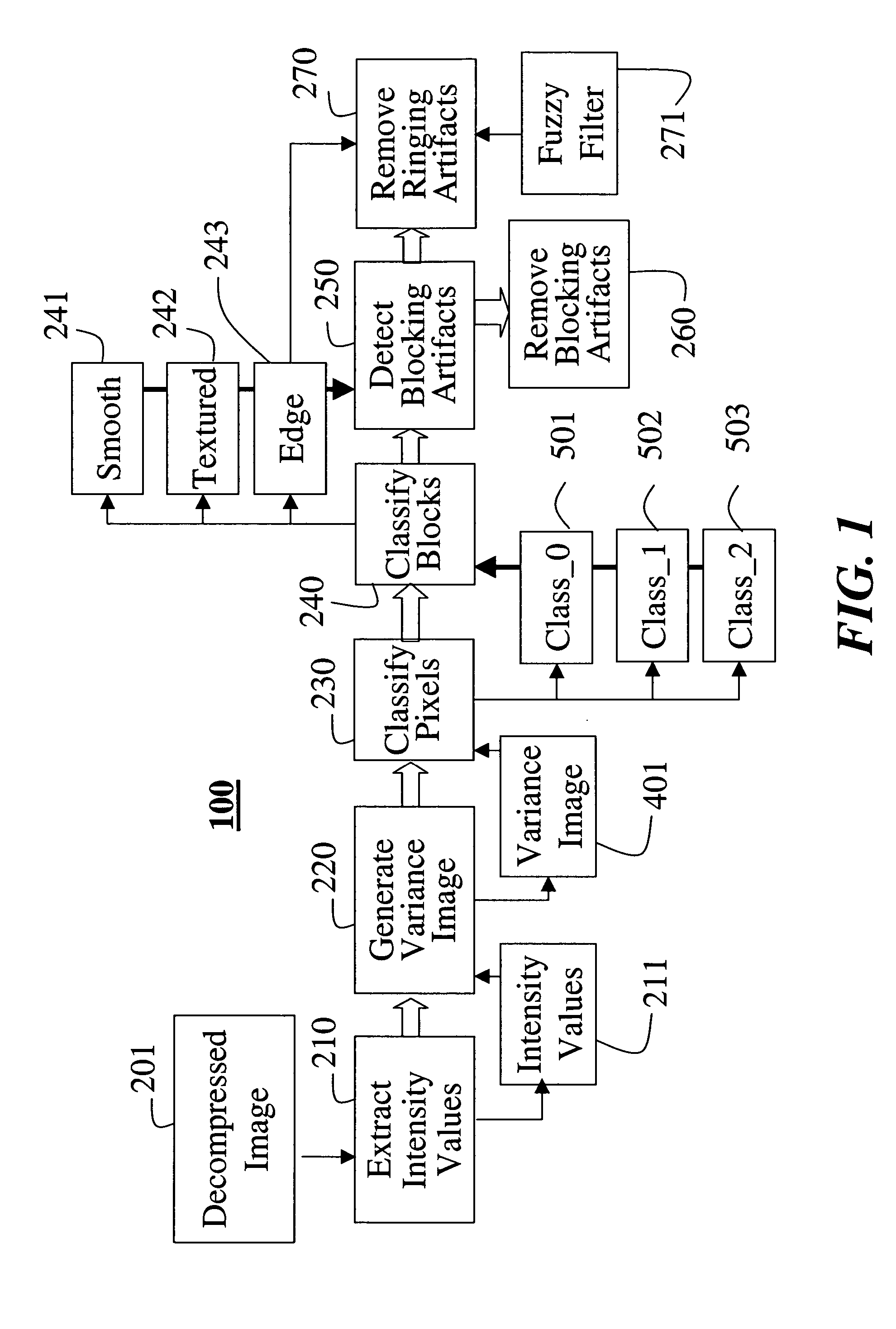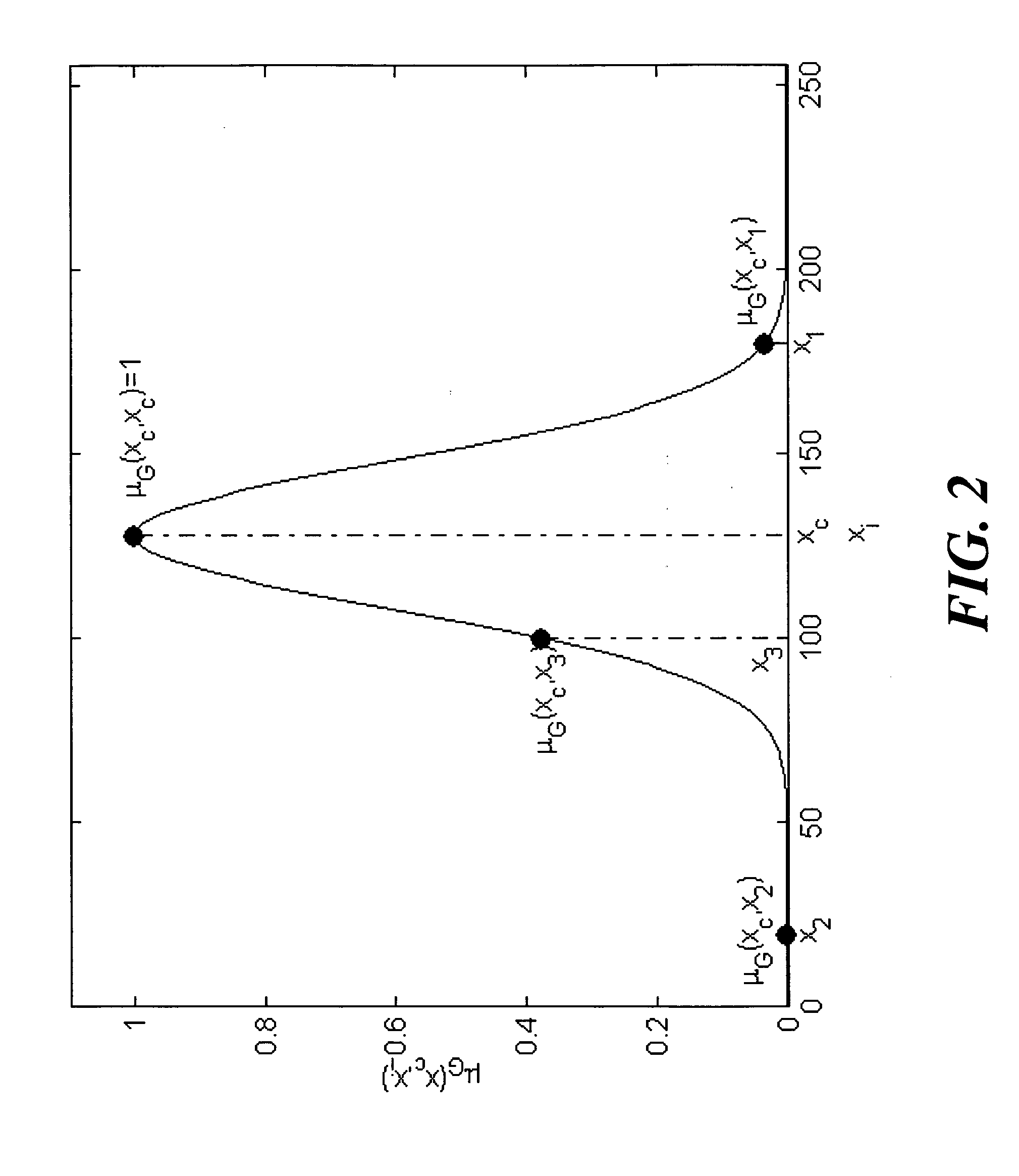System and method for reducing ringing artifacts in images
a technology of ringing noise and artifacts, applied in the field of digital signal processing, can solve the problems of blurring in the entire decompressed image, methods that are not effective for ringing noise, and visual artifacts such as blocking noise and ringing noise, and achieve the effect of reducing artifacts in the input imag
- Summary
- Abstract
- Description
- Claims
- Application Information
AI Technical Summary
Benefits of technology
Problems solved by technology
Method used
Image
Examples
Embodiment Construction
[0025]FIG. 1 shows the system and method 100 according to the invention. This system is independent of any image or video decoder. The system does not rely on any coding parameters embedded in a compressed image or video. The emphasis of our method is on local features in an image. The method according to the invention extracts local features, which are then classified. The classified features can then be used to filter selectively and adaptively the pixels, if the images is a decompressed image or video.
[0026] The input is a decompressed image 201. The method works for any image format, e.g., YUV or RGB. It should be understood that the system can handle a sequence of images as in a video. For example, the image 201 can be part of a progressive or interlaced video. It should also be noted that input image can be source image that has never been compressed.
[0027] However, if the input image is a decompressed image derived from a compresses image, and the compressed image was deriv...
PUM
 Login to View More
Login to View More Abstract
Description
Claims
Application Information
 Login to View More
Login to View More - R&D
- Intellectual Property
- Life Sciences
- Materials
- Tech Scout
- Unparalleled Data Quality
- Higher Quality Content
- 60% Fewer Hallucinations
Browse by: Latest US Patents, China's latest patents, Technical Efficacy Thesaurus, Application Domain, Technology Topic, Popular Technical Reports.
© 2025 PatSnap. All rights reserved.Legal|Privacy policy|Modern Slavery Act Transparency Statement|Sitemap|About US| Contact US: help@patsnap.com



